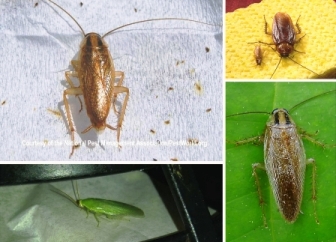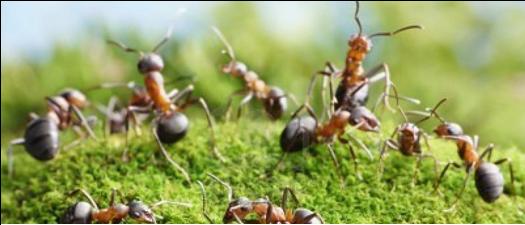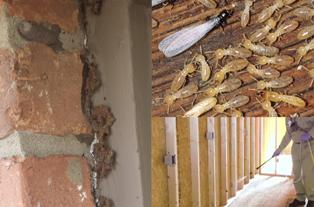Just because there are common pests in our area doesn't mean you have to like it or accept it. Integrated Pest Management is here to help you make common pests an UNcommon occurance in your home. By helping you better understand the natural behaviors and tendancies of these pests you will be better armed to protect your home and family.
Damage: Cockroaches spread human disease by depositing disease organisms on food and utensils. The American cockroach, which comes into contact with human excrement in sewers or with pet droppings, may transmit bacteria that cause Salmonella and Shigella. German cockroaches are believed to be capable of transmitting disease-causing organisms such as Staphylococcus, hepatitis, and coliform bacteria. They also have been implicated in the spread of typhoid and dysentery.
Detection and Treatment:
Cockroaches may become pests in homes, restaurants, hospitals, warehouses, offices, and virtually any structure that has food preparation or storage areas. These pests are common even in the cleanest of crowded urban areas and older dwellings. It’s usually not difficult to discover an infestation, because they are often visible. Treatment usually involves sealing cracks and crevices to block entrance; keeping food and trash areas clean to avoid providing food; and the professional application of insecticide and bait on a regular basis.
Damage: Termites eat wood, and can consequently cause great structural damage to your home if left unchecked.
Detection and Treatment:
Although termites and their tunnels are sometimes seen by the homeowner, their subterranean habits mean only a thorough professional inspection can determine whether an infestation is present, and what kind of control measures need to be taken. For more information, see Termite Facts.
Damage: Rodents consume and contaminate food. They also gnaw on electrical wires, wooden structures, and tear insulation in walls and ceilings for nesting. Rodents can also transmit disease to humans, pets, and livestock. They have been found to transmit typhus, leptospirosis, trichinosis, and salmonellosis.
Detection and Treatment:
The presence of mice and rats is usually detected by the damage they cause to food and structures, by their droppings, and by their nests. Treatment involves eliminating all entry points and population reduction by the application of rodenticides and traps. See Bob's Rodent Control Tips.
Damage:
Ants cause various types of damage, depending upon the variety. Carpenter ants tunnel through wood, destroying structures. Pharaoh ants may transmit serious diseases. A fire ant’s sting is potentially deadly to susceptible individuals, and all ants contaminate the food they infest.
Detection and Treatment:
Ants build massive colonies, so their presence is generally detected when you see their nests, or the ants themselves. Treatments involve baiting, insecticide, and sealing off entry to buildings. See Bob's Ant Control Tips.
Spiders
Except for poisonous spiders, such as the black widow and the brown recluse, spiders are not harmful to humans. When it’s important to eliminate spiders, chemical control is used, along with destruction of webs and eggs. Since they feed on insects, measures that eliminate unwanted insects will also reduce spider populations.
Biting and Stinging Pests
Damage:
Bees, wasps and scorpions are dangerous because of their painful and potentially harmful stings.
Detection and Treatment:
Wasp nests and bee hives can be removed by professionals with protective gear. Insecticides are also used. Scorpion problems are usually treated chemically.
Structural/Nuisance Ants | Carpenter Ants | Termites | Bed Bugs | Cockroaches | Fleas & Ticks | Mosquitoes | Rodents | Specialty: Trapping, snakes, bats | Common Pests




